In the long term, moving your store online keeps you in business. Thousands of brick and mortar stores have closed down because shoppers are moving online.
Besides, the rise of ecommerce platforms like Shopify, 3dcart, BigCommerce, Big Cartel, and the rest makes this transition easy.
Let’s take Shopify for example.
They offer courses and webinars to help you through the process of moving your store online. You also have access to other offers like 90 percent off your shipping cost.
7 Reasons Why Moving Your Brick-and-Mortar Store Online Makes Sense Right Now
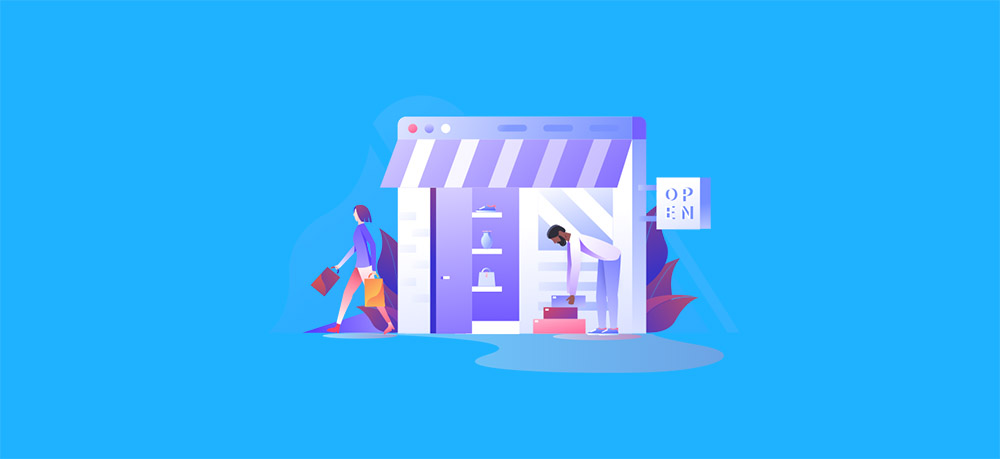
Technology has changed a lot of things, including retail. Thanks to the internet, people can stay at home and do their shopping. But instead of seeing it as a threat to your brick and mortar store, you can make yours a hybrid store.
Here are a few reasons why you should make this shift.
1. The COVID-19 Pandemic Has Changed Everything
People will still shop in-store post-COVID-19. But they will develop the habit of shopping online this lockdown season. So while they’ll still go out to shop for items after the pandemic, shoppers will be more than comfortable buying things online.
If you don’t move your brick and mortar store online, you stand the chance of missing out on this new normal.
2. Rent
The cost of managing a physical store is expensive, even for small businesses. Some contracts may require that you use the facility for a year or more. So, it doesn’t matter if the business isn’t making a profit.
3. Reduce Losses
Once retailers can’t sell off their goods, they either return them or lower their prices to run a sale. Either way, their expenses increase and profitability goes down. Another way a retailer may lose sales is if they’re out of stock and their competitor has that same product.
Having an online store makes it easy to retain your customers even when you don’t have the product they need. You can easily get the product from someone else and resell it.
4. Lower Costs and Boost Your Delivery Speed
Online buyers want the freedom to decide the cost and speed of delivery. They want free and fast delivery at the same time. Albeit, if they have to choose between free delivery and fast delivery, they’d go for fast delivery instead.
Big marketplaces like Amazon offer free same-day shipping in many cities. When smaller brands try to compete, it affects their revenue because they’re not in all locations. So, fulfillment is slower and more expensive. But as a small business in your city you can deliver the same day and for free too, effectively competing with big brands within your city.
6. Manage Location and Capacity Limitations
With a brick and mortar store, you’re faced with limitations that may include equipment, space, or staffing. This might lead to delays and low productivity in special shopping seasons like Black Friday and Cyber Monday.
A physical retail store needs staff to handle some functions like:
- Ring up sales
- Stock inventory, and
- Cleaning the facility
To reduce the stress on a brick and mortar store, you’ll need multiple outlets. But that doesn’t come cheap. But an online store can serve multiple cities while maintaining its inventory in one location.
7. Learn More About Your Customers
There’s a lot you can learn about your customers in the flesh: in daily life, we can usually tell by the way someone dresses if they’re a bit of a hipster, or if someone’s a bit posh by the way they speak. And the way customers physically interact with your products can give you a lot of feedback too.
Online data about your customers is different, but perhaps even more valuable: the intuitions you have about your customers IRL can be confirmed or disproven, quantified and analysed to help you make your offering even more appealing. Just be sure you're gathering and using this data ethically!
The 12 Building Blocks for Moving Your Brick-and-Mortar Store Online

Before you start selling online, you’ll have to set a strong foundation. Since you already have a physical store, you want to find out the kind of people that use the products you sell. When you know your ideal customer, the other steps will be easy to follow.
Use the following steps to lay your groundwork.
1. Develop Your User Persona
You have to recognize who you sell to or who buys from you. Since you already have a business, your primary customers are people who already buy from your physical store. You just need to profile them.
Besides, you want to know the marketing or messaging channels that attract these shoppers. Knowing where your customers are coming from helps you know how to market to them.
Start your journey online by defining who buys from you, that is, a buyer persona.
👉 A persona helps you answer questions like:
- How important is my product or service to my customers?
- Who’s my perfect customer?
- How do I expect my ideal customer to behave?
- How do my current customers behave?
- In what geographical location do people use my products?
- What are the needs and expectations of my customers?
- What are my current customers’ pain-points or disappointments?
- Is my product a seasonal one?
In short, it clarifies who you’ll target in your campaigns.
Keep in mind that your end-users might not be the buyers or decision-makers. Children, for instance, might like your toys, but their parents or guardians are the decision-makers. You might get a more complex situation where the influencer is different from both the buyer and the end-user.
So, when you’re describing your customer, be sure to target the person with the money and the one who calls the shots.
2. Choose the Right Platform or Software
Once you’ve identified your ideal audience, make sure to choose an ecommerce platform that appeals to them.
If you are looking for the best ecommerce platform, here are our top recommendations:
- 6 of the Best Ecommerce Platforms and Solutions: Shopify vs Volusion vs BigCommerce vs Big Cartel vs 3dcart vs Ecwid
If your brand already has a website then you want to find an ecommerce software that works with it. And if this ecommerce tool can connect you to a POS system, that’s even better. If your ecommerce platform integrates with POS software then your online and offline store can use a seamless checkout system.
However, if you don’t have a website, check if your physical store’s POS solution integrates with any ecommerce software or platform. In some cases, connecting to an integrated ecommerce platform syncs your current inventory with your online store. Thus making it easier to manage both channels.
Some of these integrations may include POS solutions like Shopify POS, LightSpeed, Square, Vend, etc.
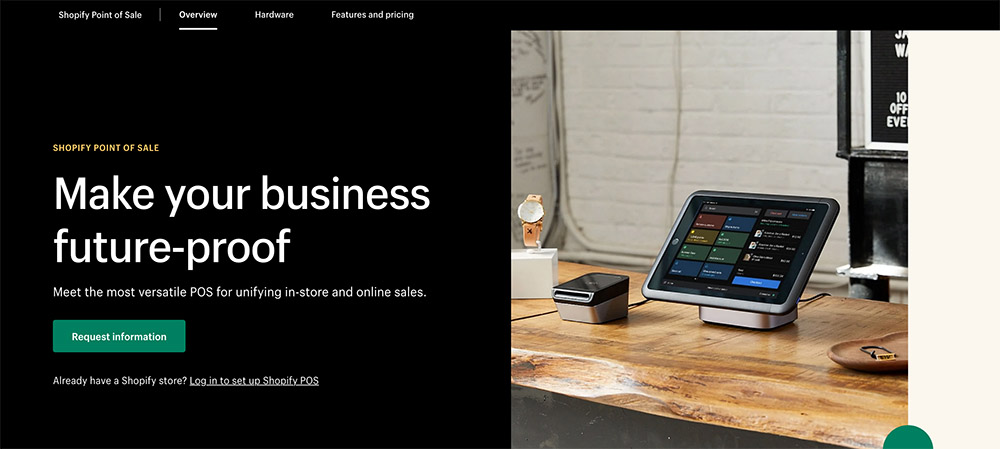
👉 To decide which platform to use, you might first want to know:
- The total cost
- How easy it is to install and use
- What kind of security and compliance system comes with it
- If it’s flexible to design
- How many products you can upload per time
- The pricing of the ecommerce platform, web host, and domain name
- If it comes with added charges
- Its scalability
- Responsiveness on mobile and other devices
- How well it can help you achieve your desired design
- Customer support
- Technical support, and more.
Once you’ve identified your ideal platform, you can go ahead with your domain name.
3. Choose Your Domain Name
Moving your business online is like changing your store’s location. So, you want to point your customers to your new store.
You can retain your current brand name if you want to build brand awareness for your brick-and-mortar business. Albeit, if you plan to rebrand your store, then you may want it to be SEO-friendly and attractive to customers.
You want to make it easy for customers to recognize your store. So, choose a name that’s easy to remember.
If it’s easy for people to misspell your domain name, you might want to buy the misspelled alternatives as well. Then redirect those domains to the real one.
4. Choose the Products to Display Online
If your physical store sells a lot of products, you’ll have to be strategic in the way you display them online. Streamline your products by choosing those with the highest demands. More so, the products you choose to start with have to appeal to a larger audience.
You can also increase your chances of success by stocking your store with products that perform well in your city or with your audience. Be sure that the products you display in your online store are easy to source, store, and ship. It doesn’t help that shoppers buy your product online and can’t get them as promised.
5. Monitor Your Competitors
Do some research to find out what other online stores in your niche are doing. Check out their pricing, which should include tax, service fees, shipping charges, any other thing that goes into the total cost of the product.
Find out how they set their website and their selling strategies to know which products they advertise the most.
Don’t be bothered if you can’t compete with their pricing. You can compete with the value you offer as well.
👉 You can compete with:
- Higher quality products
- Better customer service
- Faster shipping
The purpose of observing your competitors is to inform your promotional and business strategies, not to copy them. Copying your competitors blindly can be unhealthy for your business.
6. Write Custom Page Titles and Meta Descriptions
If you plan to transfer your brick and mortar store online quickly, then you might not have enough time to properly describe each product. Plus, it’s not a process you want to rush. However, you can easily come up with meta descriptions and titles to set things in motion.
Your meta description is a summary of your web page that search engines often display in search results. In HTML, it’s a 160 character snippet that gives your visitors an idea of what the page is about.

This method of describing the page other than individual products makes it easy to upload more products.
👉 Your meta description must:
- Be unique from the description of your other pages
- Use the keywords that the page targets
- Read naturally
- Use an active tone
- Compel readers to click
- Be directly relevant to that page
- Not be spammy
Your meta keywords and meta description doesn’t have a direct effect on Google ranking. Albeit, it improves your CTR (click-through-rate), which ultimately affects your ranking.
7. Take Pictures of Your Inventory
Buyers want to see and feel what they’re buying most of the time. Albeit, you can help your customers feel like they aren’t missing anything by showing them all the angles of each product. Seventy-five percent of online shoppers depend on product photos to make buying decisions.
Showcase your products with high-quality images.
Using the original photos of your product boosts your SEO better than stock photos. With a white background, you can use a camera or a good smartphone to achieve a professional-looking photograph. You can then use a photo editor to perfect your image.
You can make use of models if your products are worn. Otherwise, you can ask your loyal customers to take pictures of the products they bought.
8. Determine Your Shipping Costs
With an online store, comes the responsibility of getting the products to the customer. You could choose to ship the items yourself or employ third-party services that’ll store, package, and ship on your behalf.
Buyers like transparency, so it puts them off if the total cost changes at checkout because of hidden fees. Online sellers have several strategies to reduce abandoned cart, which includes:
- Displaying shipping fees (with taxes, processing fees, and other expenses)
- Offer discounted or free shipping for buyers to spend more
Use the dimension and weight metrics that are popular at the customer’s location.
9. Choose Your Payment Methods
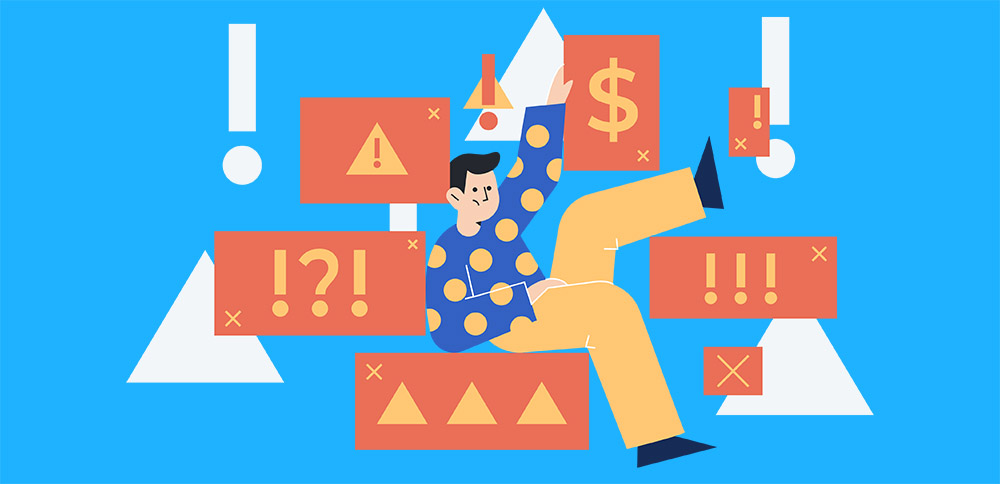
When choosing a payment method, you have to consider which is widely accepted, easy to set up, and convenient to use. It should easily integrate with your online store and sync with your physical store’s inventory and checkout.
Integrate at least two payment processors to let your customers choose their payment method, if possible. Using a merchant account or payment service providers (PSPs) would help here.
PSPs like PayPal, Stripe, and others, handle all aspects of sending and receiving payments and take an agreed percentage for payment processing. Most buyers trust PayPal because it removes the risk of their financial information falling into the wrong hands. So, you might want to make it one of your payment options.
Which payment gateway should you use for your ecommerce store?, here are our top recommendations:
You increase your customers’ willingness to buy by 54 percent when you add PayPal as a payment option. This behavior rubs off on the non-users of PayPal as well, even when they might not use PayPal.
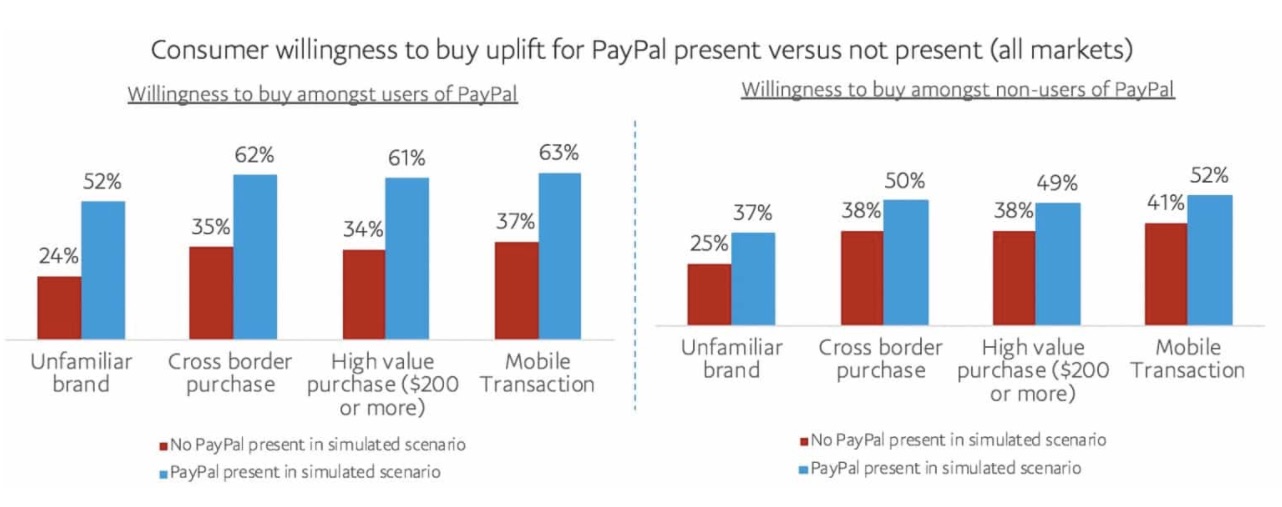
Almost 60 percent of PayPal users have stopped a transaction because PayPal wasn’t in the payment option.
You can also use an in-store POS that links to an ecommerce platform. It’ll handle your inventory updates, payments, and taxes from your online and physical stores simultaneously.
11. Take Care of Your Security and Tax Details
Before you launch your online store, make sure you sort out any security and tax issues that might arise.
Security is a priority for online buyers. You owe it to your customers to protect their information from data breaches. Adding an SSL certificate is critical here.
However, you can use a variety of compliance software to avoid tax problems. Some compliance software solutions automate calculations, tax filings, and exemptions for your store.
12. Create Your Shipping and Refund Policy
Use your shipping and refund policy to build relationships with your customers. This practice is even more important if your brick and mortar store isn't well known to buyers.
Friendly shipping and refund policies help you build trust in your potential buyers. Show transparency in your business by sharing all the important information that buyers need to know about your brand and products.
When you send emails to your customers, include this information as links, along with a FAQs link too. Buyers don’t want to feel pressured or stuck with products that they don’t want. So, some sellers give about 20 to 30 days to make it easy for customers to return products.
Some brands have a Return Request feature that allows customers to get return shipping labels. It also shows them if they’re still within the return time. Some other stores use reusable eco-friendly boxes that allow the customer to return products with the same box.
Optimize for SEO and Engagement
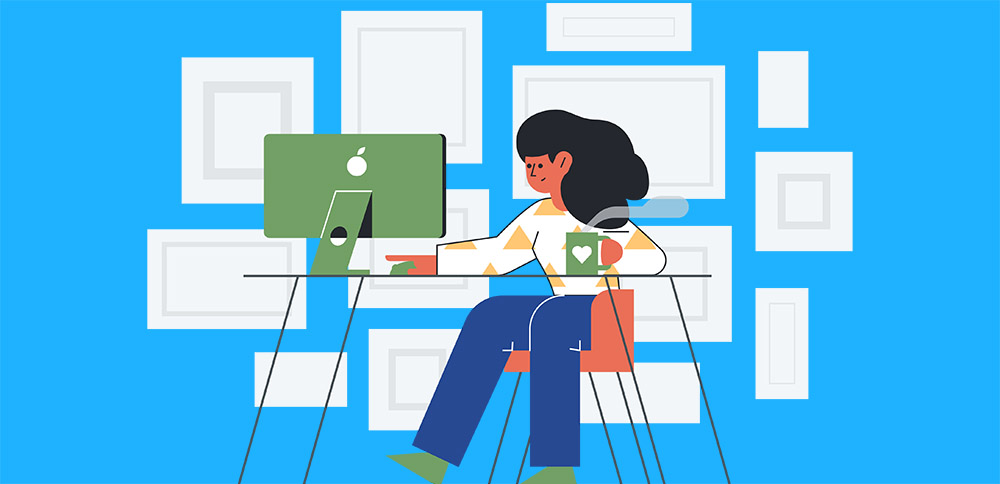
Once you’ve taken care of all the groundworks, it’s time to launch your store and optimize for SEO. Good SEO content attracts visitors to your store, however you might benefit better if you start with inbound marketing.
👉 Here’s how you can use inbound marketing to drive SEO for your product,
- Building content
- Engaging with customers on social media, and
- Writing SEO-driven product descriptions
Follow the following steps to optimize your store.
1. Choose a Website Design for Your Brand
You want your website design to be consistent with your brick and mortar brand. It doesn’t have to be flashy, especially if you’re not in fashion and design, but the app must be functional.
You can choose an ecommerce platform or a host that offers customizable store templates. Or you can employ an expert to help you with it. Whatever your choice, ensure that you prioritize the customer experience.
Use simple navigation to avoid a cluttered home page. The flexibility you get from different ecommerce platforms vary, so make sure you understand how they work and if it’s a fit for you.
About 87 percent of shoppers search for products online before they buy, so it’s important to optimize your site for mobile responsiveness. Optimizing your site for mobile and desktop improves conversions for both new and returning site visitors.
2. Boost Conversion Rates with Your Design
Simple website design with easy navigation is the most important factor to 76 percent of customers. They want the ability to quickly find what they want with the click of a button. Plus, using navigation helps you keep your home page neat and uncluttered.
You can further clean up your pages with white or negative spaces. That way, your customers aren’t overwhelmed with the amount of texts and elements on your site.
It’s important to be consistent with your brand, color, fonts, and images if you want your customers to perceive you as a professional.
People say “Don’t judge a book by its cover.” But within 90 seconds of their encounter with other people or anything, they’ve made up their minds. And between 62 to 90 percent of their judgment is from color alone.
Use sharp colors to attract attention to what you want them to see and dull colors to reduce distraction in some areas. An example is a conspicuous call to action button that engages users on your website.
3. Prioritize Your Product Page
For ecommerce, your product pages get the most visits, so investing too much resource in the home page instead of the product page might be counterproductive. However, you want to test things out here.
Your home page, however, should give your customers a feel of what your store is about.
Your meta description was useful for attracting traffic to your website, but your visitors will engage better with a detailed product page.
If you want even more organic traffic, then using the right keywords on your product pages will help. That’s why you want to pay close attention to your product descriptions. You want to give your shoppers enough information to make their buying decision easy.
Use real product photos of the highest quality. Visuals generally convert better, so use a video that shows how your products work to help customers see the benefits they can get from your product.
Furthermore, you can show off your buyers’ testimonies, reviews, and ratings so your visitors can see stories of people who enjoy and use products they bought from your store. Although it might be tempting to show only good reviews, showing the negative ones as well gives a more natural outlook.
👉 Make sure your product page displays:
- Shipping and Return Information
- Links to your shipping and return policy
- Descriptions of your shipping and return policy
- Size guide for wearable products
Once you’ve built your home page and product page, build brand affinity by engaging with your customers through quizzes, blogs, or news content.
5. SEO Never Stops
Optimizing for SEO is not a once and for all activity, it’s a continuous process. Content drives ecommerce websites as it engages your customers. And if you do an excellent job, they’d keep coming for more.
👉 You can:
- Add banners to your brand page
- FAQs to drive traffic from similar questions on search engines
- Short descriptions for category pages
Consider adding questions to your FAQ list as you encounter questions that relate to your products.
Create Brand Awareness
After taking care of inbound marketing, you have to make sure your visitors engage with your products.
👉 You can do this in many ways, including:
- Mailing customers who made a purchase
- Incentivizing them to engage with your campaigns
- Sending discount coupons to visitors who abandoned carts at checkout
The reason for brand awareness is to increase trust in your brand. Over time, people tend to identify products based on their brand’s name.
When someone checks something on the internet, you might hear “I Googled it.” The same way Coke replaces fuzzy soda.
Track Results and Make Improvements

You can use Google Search Console (GSC) or other tracking tools like SEMrush to improve your store’s performance by gathering performance data and using it to improve your selling activities.

Specifically, helps you measure your store’s traffic and performance. You get to see which keywords are responsible for bringing the most visits, what product pages people are visiting, how long they spend on those pages and more.
SEMrush also shows you how you compare to your competitors and what keywords have the most potential to win your site some SERP Features.
Data is a friend here. So you can rely on the data you get to from your site and your competitors to chart your growth strategies.
Wrap Up
If you’re a brick and mortar store that wants to move your operations online, then this is your guide. Having an ecommerce store lets you reach a wider audience because you’re not bound by geolocation. An online store also boosts your offerings to your shoppers who don’t have to take on the risk of coming out to shop when they should be indoors.




Comments 0 Responses